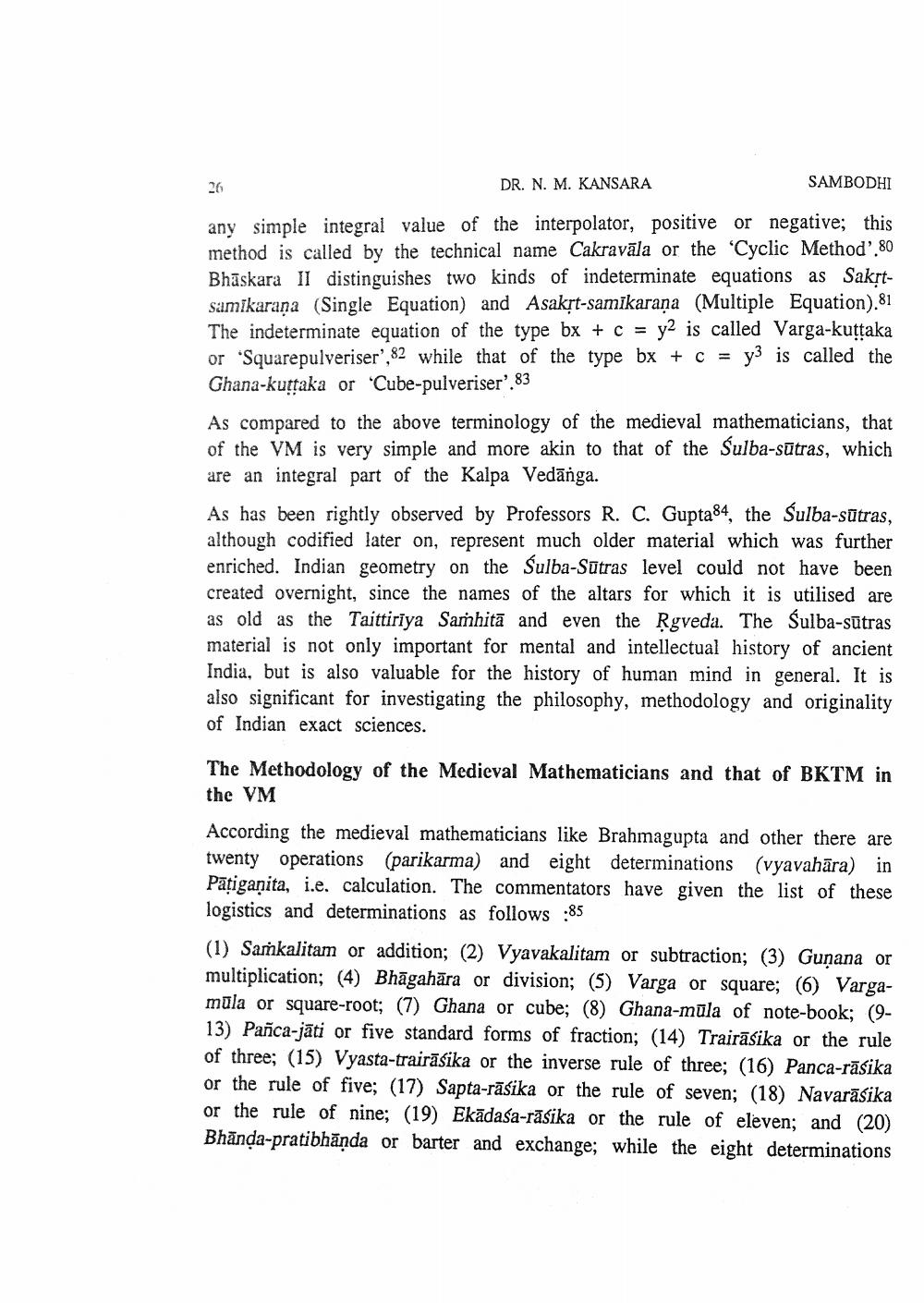________________
DR. N. M. KANSARA
SAMBODHI
any simple integral value of the interpolator, positive or negative; this method is called by the technical name Cakravāla or the "Cyclic Method'.80 Bhaskara Il distinguishes two kinds of indeterminate equations as Sakrtsamikarana (Single Equation) and Asakst-samikarana (Multiple Equation).81 The indeterminate equation of the type bx + c = y2 is called Varga-kuttaka or 'Squarepulveriser',82 while that of the type bx + c = y3 is called the Ghana-kuttaka or 'Cube-pulveriser'.83 As compared to the above terminology of the medieval mathematicians, that of the VM is very simple and more akin to that of the Sulba-sūtras, which are an integral part of the Kalpa Vedānga. As has been rightly observed by Professors R. C. Gupta84, the Sulba-sutras, although codified later on, represent much older material which was further enriched. Indian geometry on the Sulba-Sūtras level could not have been created overnight, since the names of the altars for which it is utilised are as old as the Taittiriya Samhitā and even the Rgveda. The Sulba-sūtras material is not only important for mental and intellectual history of ancient India, but is also valuable for the history of human mind in general. It is also significant for investigating the philosophy, methodology and originality of Indian exact sciences.
The Methodology of the Medieval Mathematicians and that of BKTM in the VM
According the medieval mathematicians like Brahmagupta and other there are twenty operations (parikarma) and eight determinations (vyavahāra) in Pāțiganita, i.e. calculation. The commentators have given the list of these logistics and determinations as follows 585
(1) Samkalitam or addition; (2) Vyavakalitam or subtraction; (3) Gunana or multiplication; (4) Bhāgahāra or division; (5) Varga or square; (6) Vargamula or square-root; (7) Ghana or cube; (8) Ghana-mula of note-book; (913) Pañca-jāti or five standard forms of fraction; (14) Trairāśika or the rule of three; (15) Vyasta-trairāśika or the inverse rule of three; (16) Panca-rāśika or the rule of five; (17) Sapta-rāśika or the rule of seven; (18) Navarāśika or the rule of nine; (19) Ekādaśa-rāśika or the rule of eleven; and (20) Bhända-pratibhānda or barter and exchange; while the eight determinations




